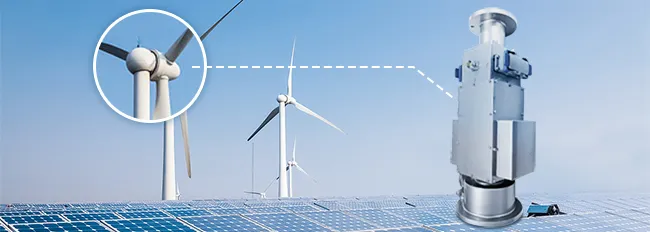Copper slip rings are an option for many electromechanical devices when power or signals need to be transferred from a stationary part to a rotating part, and slip rings are often found to be made of copper. but why? Why are slip rings made of copper? In this article, we explore the reasons behind this choice.
Reasons Why Copper Becomes the Raw Material of Slip Ring
What is the reason why copper stands out as a raw material from many materials in nature? It can be analyzed from the following aspects.
Conductivity of Copper
One of the most important reasons is that copper has relatively high conductivity. Slip rings are electromechanical devices that transmit electrical signals. The conductivity is the most important reason to be considered, and the conductivity of copper is much better than most metals.
In addition to considering functions, cost performance is another point that needs to be considered. The reserve of copper is very abundant, so the price is relatively cheap; in addition, the processing procedure of copper is simple, and there will not be a lot of extra costs. These properties are why copper is an ideal material for slip rings.
Copper Durability
As an electromechanical connection device, the slip ring needs to withstand the wear and tear of constant movement and the friction of other metal parts, so durability also needs to be considered. Copper happens to be a durable material with great toughness.
Heat Dissipation of Copper
If you look closely, you will find that copper generates a lot of heat during operation, so materials with good heat dissipation capabilities are often considered first. The heat dissipation performance of copper is very good, and the copper slip ring can prevent the slip ring from overheating and damaging the equipment during operation.
Plasticity of Copper
Slip rings often need to be manufactured into various shapes and sizes in order to function better, which requires highly malleable raw materials. Copper is a metal with strong plasticity, and its excellent ductility meets the needs of slip-ring manufacturing.
Maintenance and Life
Once the slip ring is used, the maintenance cost must be considered, and it is necessary to choose corrosion-resistant materials. Copper has strong corrosion resistance and can be exposed to the outside world for a long time. At the same time, copper has a low friction coefficient, which means that copper slip rings wear less during use and can be used for a long time.
Conclusion
In conclusion, copper is the preferred material for slip rings due to its excellent conductivity, durability, heat dissipation, and ease of fabrication. These properties ensure that slip rings made of copper are efficient, long-lasting, and easy to maintain.
If you have any questions about slip rings or their design, please leave a comment.
Frequently Asked Questions
Q: How Are Copper Slip Rings Made?
A: Copper slip rings are manufactured using a variety of processes including casting, stamping, and machining. The most common method is machining. During this process, the copper rods are cut into the desired shape and size using computer-controlled machines. The surface is then polished to ensure a smooth finish that reduces friction and wear.
Q: Why Are Slip Rings Made of Copper?
A: Copper is an excellent conductor of electricity and has high thermal conductivity. It is also highly resistant to corrosion and has good mechanical properties, making it an ideal material for slip rings.
Q: Can Slip Rings Be Made of Other Materials Besides Copper?
A: Yes, slip rings can be made of other materials, such as silver, gold, and aluminum. However, copper is the most commonly used material due to its combination of electrical conductivity, thermal conductivity, and mechanical properties.
Q: What Are the Advantages of Using Copper Slip Rings?
A: Copper slip rings offer low electrical resistance, high thermal conductivity, and excellent mechanical strength. They are also relatively low cost compared to other materials and are readily available.
Q: What Are the Disadvantages of Using Copper Slip Rings?
A: Copper slip rings can be subject to wear and tear over time, which can lead to reduced performance and eventual failure. They are also vulnerable to corrosion in certain environments.
Q: Are There Any Alternatives to Slip Rings?
A: Yes, alternatives to slip rings include wireless communication, fiber optic cables, and induction-based power and signal transfer. However, slip rings are still widely used due to their simplicity and reliability in many applications.
See What We Can Do

